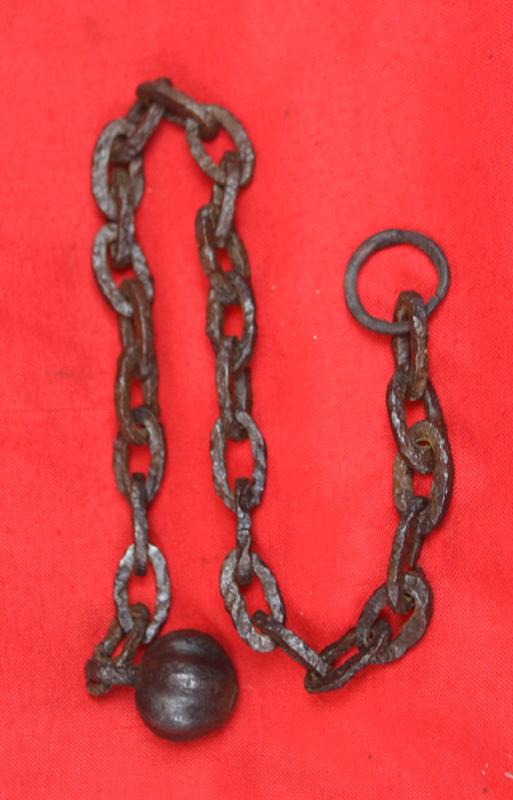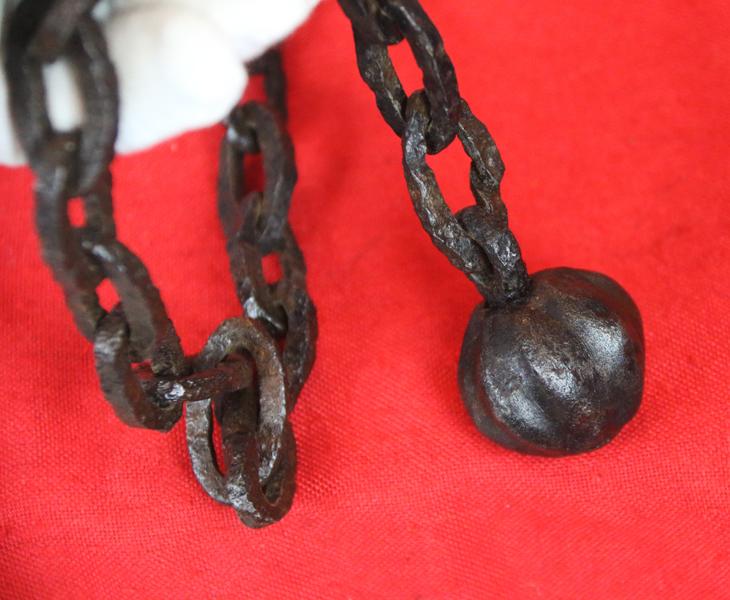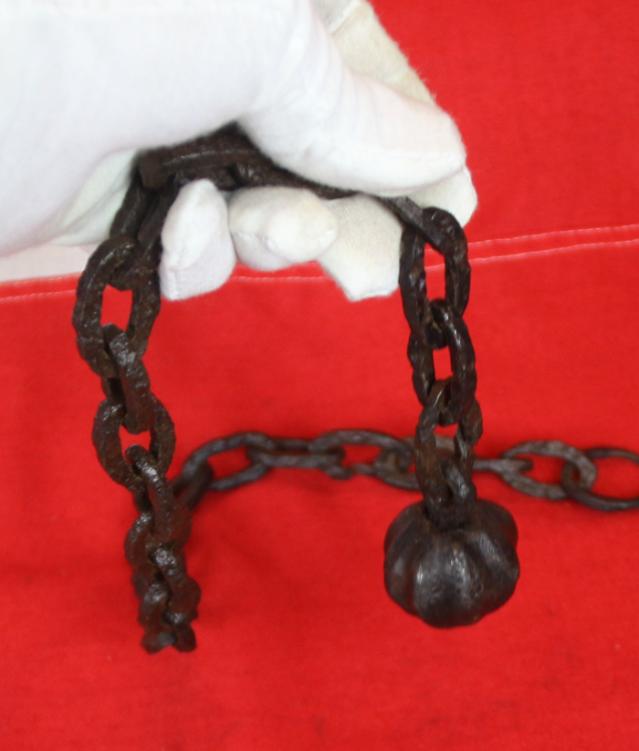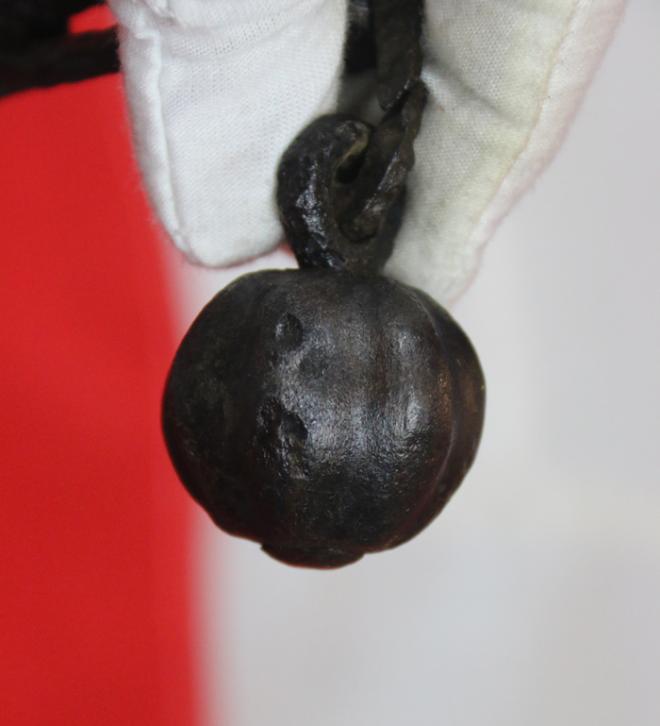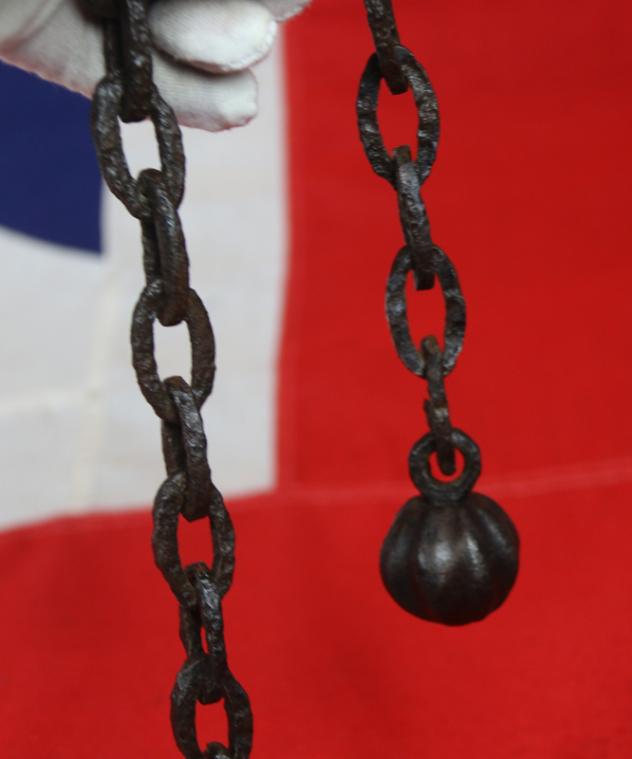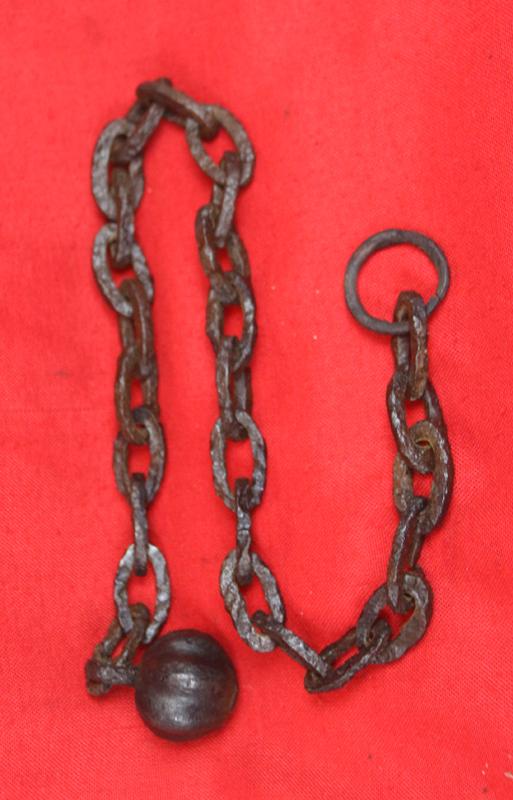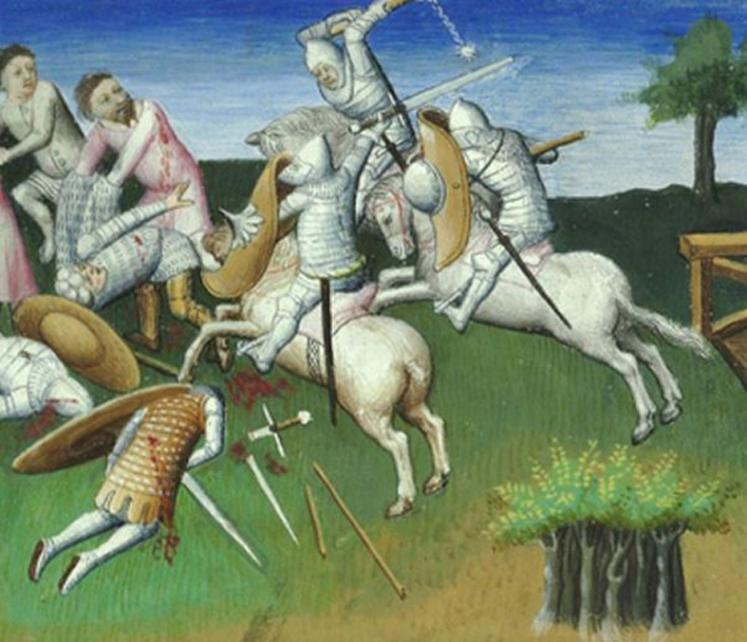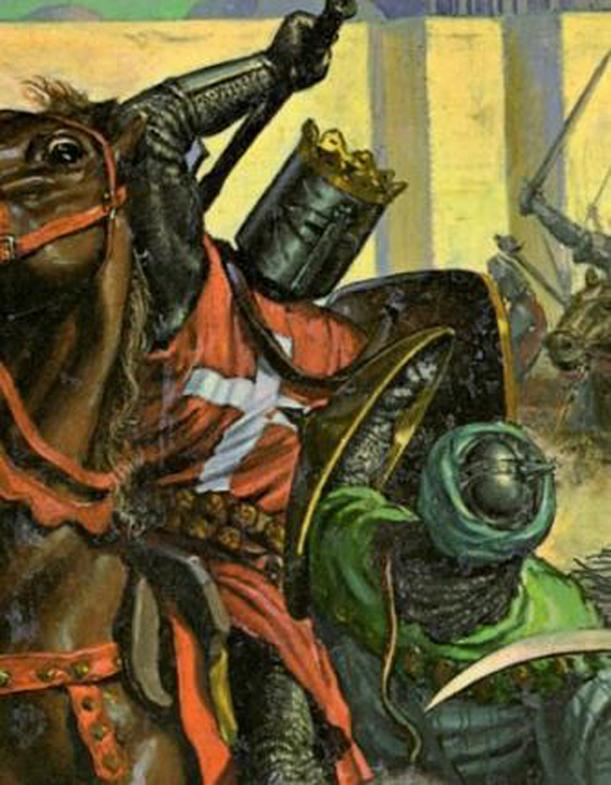Medievil 13th Century Iron Flail Mace, also Known as a 'Scorpion's Tail', Henry IIIrd & Edward Ist Period
Medieval Flail Head with Chain 13th Century used until the 15th century. Around 800 years old, and used as as a most effective weapon for likely 300 of those years.
An iron flail head formed around central pin with suspension loop and domed terminal; iron chain with arranged crescentic lobes to the circumference. flat-sectioned ellipsoidal links and hoop; head with spherical body and seven raised vertically
Used from the 1200’s up to and past the battle of Agincourt 1415, Where the small British Army utterly vanquished the massively superior sized French army, up to 4 to 6 times in size.
.From the period of the 8th Crusade and the Wars in Scotland against Sir William Wallace by the Edward I (17/18 June 1239 – 7 July 1307), also known as Edward Longshanks and the Hammer of the Scots (Latin: Malleus Scotorum), was King of England from 1272 to 1307 . The last major crusade aimed at the Holy Land, and an failure that well symbolises the end of the crusades. In the previous twenty years, the remaining crusader states had become increasingly powerless pawns while tides of Mongol and then Mameluke conquests swept across the area. Louis IX of France, in an attempt to restore the situation, decided to go back on crusade after nearly twenty years, but mislead by the idea that the Bey of Tunis could be converted to Christianity, he decided to land first in Tunisia, then march across Egypt to the Holy Land. However, once he arrived in Tunisia, it was clear that this was not the case, and he had to besiege Tunis. Louis then died in an epidemic, to be replaced by his brother Charles of Anjou, king of Sicily, and a reluctant crusader, who negotiated terms with the Bey, who paid tribute to him and France, after which the crusade ended. After the crusade was over, the future Edward I of England arrived, and finding the crusade over, journeyed on himself to the Holy Land, where the powerful crusader fortress of Krak had just been captured by Baibars, where he campaigned until 1272, when the death of his father Henry III forced him to return to England. The crusading era in the Holy Land ended in 1291, with the fall of Acre, the last crusader base in Palestine. This type of European flail is a shorter weapon consisting of a wooden haft connected by a chain, with a bronze faceted orb striking end. Modern works variously refer to this particular weapon as a "military flail," "mace-and-chain" or "chain mace," and sometimes erroneously label them as simply a "mace" or morning star, terms which technically apply only to rigid weapons. Some historians refer to this weapon as a kettenmorgenstern ("chain morning star") to distinguish it from the rigid weapon. We show in the gallery early manuscript paintings of knights with chain flails but the illustrated size of the mace head, as usual even today, are exaggerated. The Battle of Agincourt was a major English victory in the Hundred Years' War. The battle took place on 25 October 1415 (Saint Crispin's Day) in the County of Saint-Pol, Artois, some 40 km south of Calais. Along with the battles of Crécy (1346) and Poitiers (1356), it was one of the most important English triumphs in the conflict. England's victory at Agincourt against a numerically superior French army crippled France, and started a new period in the war during which the English began enjoying great military successes.
After several decades of relative peace, the English had renewed their war effort in 1415 amid the failure of negotiations with the French. In the ensuing campaign, many soldiers perished due to disease and the English numbers dwindled, but as they tried to withdraw to English-held Calais they found their path blocked by a considerably larger French army. Despite the disadvantage, the following battle ended in an overwhelming tactical victory for the English.
King Henry V of England led his troops into battle and participated in hand-to-hand fighting. The French king of the time, Charles VI, did not command the French army himself, as he suffered from severe psychotic illnesses with moderate mental incapacitation. Instead, the French were commanded by Constable Charles d'Albret and various prominent French noblemen of the Armagnac party.
This battle is notable for the use of the English longbow in very large numbers, with the English and Welsh archers forming up to 80 percent of Henry's army. The decimation of the French cavalry at their hands is regarded as an indicator of the decline of cavalry and the beginning of the dominance of ranged weapons on the battlefield.
Agincourt is one of England's most celebrated victories. The battle is the centrepiece of the play Henry V by Shakespeare. Juliet Barker in her book Agincourt: The King, the Campaign, the Battle ( published in 2005) argues the English and Welsh were outnumbered "at least four to one and possibly as much as six to one". She suggests figures of about 6,000 for the English and 36,000 for the French, based on the Gesta Henrici's figures of 5,000 archers and 900 men-at-arms for the English, and Jean de Wavrin's statement "that the French were six times more numerous than the English". The 2009 Encyclopædia Britannica uses the figures of about 6,000 for the English and 20,000 to 30,000 for the French
365 grams, 62cm (24 1/2"). From the family collection of a UK gentleman, by descent in the early 1970s; previously acquired before 1960.
Fine condition, nicely conserved.
Code: 23418

